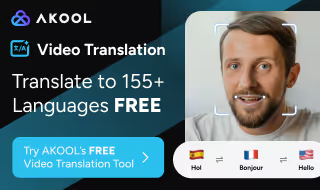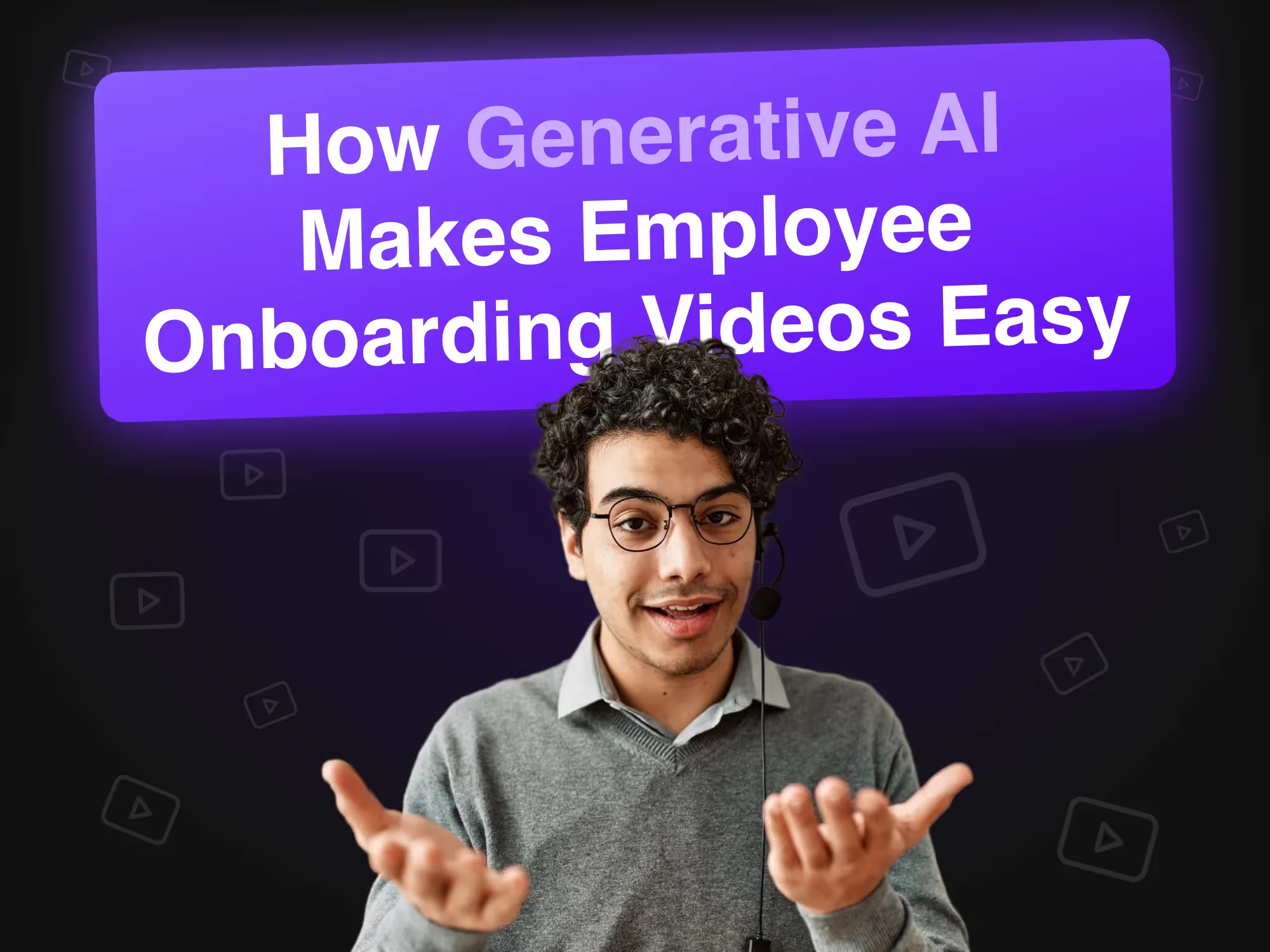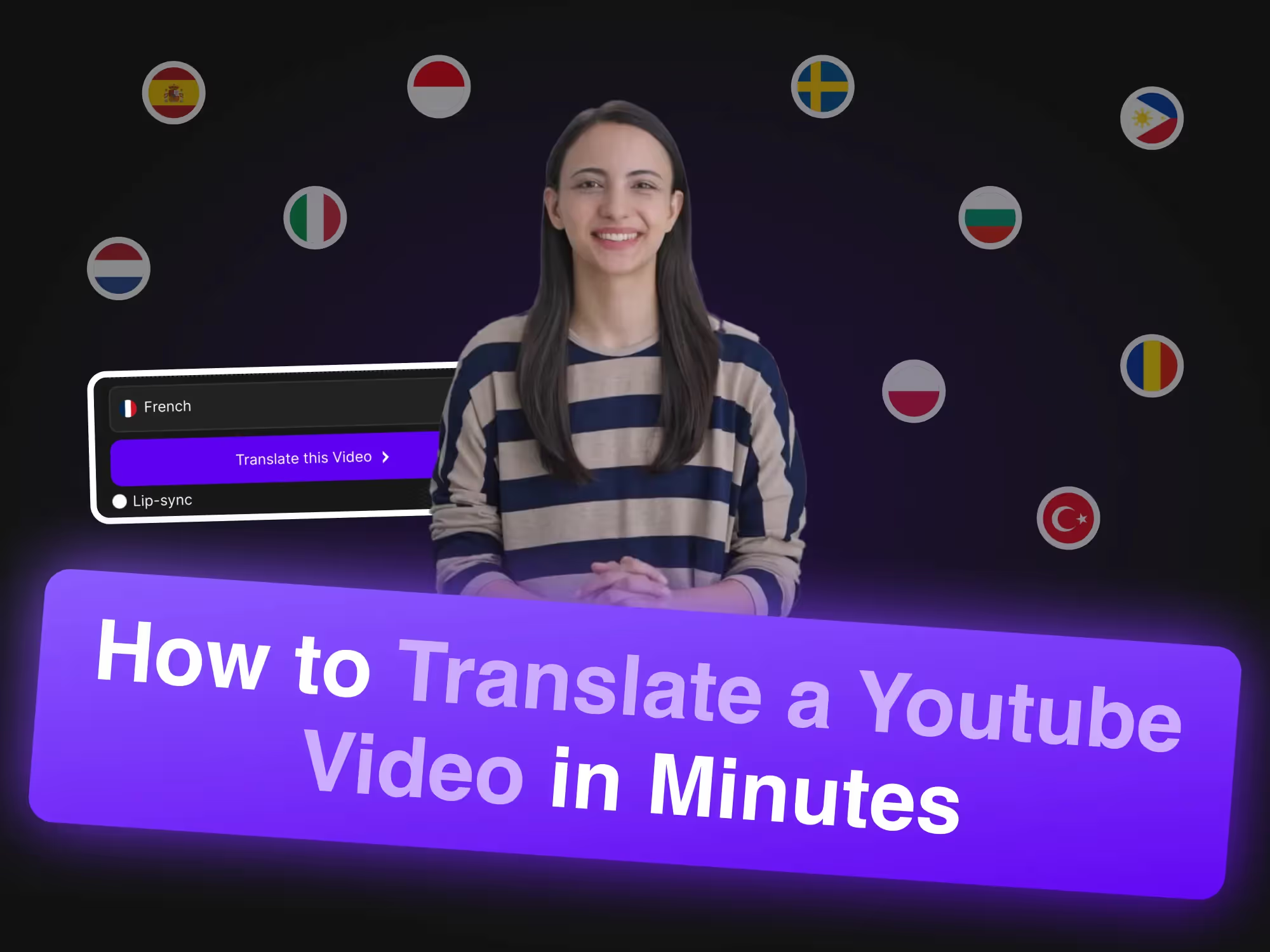As companies continue to expand across the globe—training a diverse workforce has become a crucial aspect of ensuring success. However, this presents a unique set of challenges, including cultural differences in phrases and logistical hurdles that must be addressed.
Typically, traditional training methods often fall short in meeting these needs, due to their rigid and inflexible approach. Hence, a modern and effective training program must be both scalable and adaptable to cater to the unique needs of each employee.
AI and translation tools are starting to become the most important assets in the modern training arsenal, offering flexible and dynamic solutions customized to diverse employee groups. With AI tools at your disposal, you can confidently overcome the challenges of training a globally dispersed workforce.
Understanding the Importance of AI Training Videos
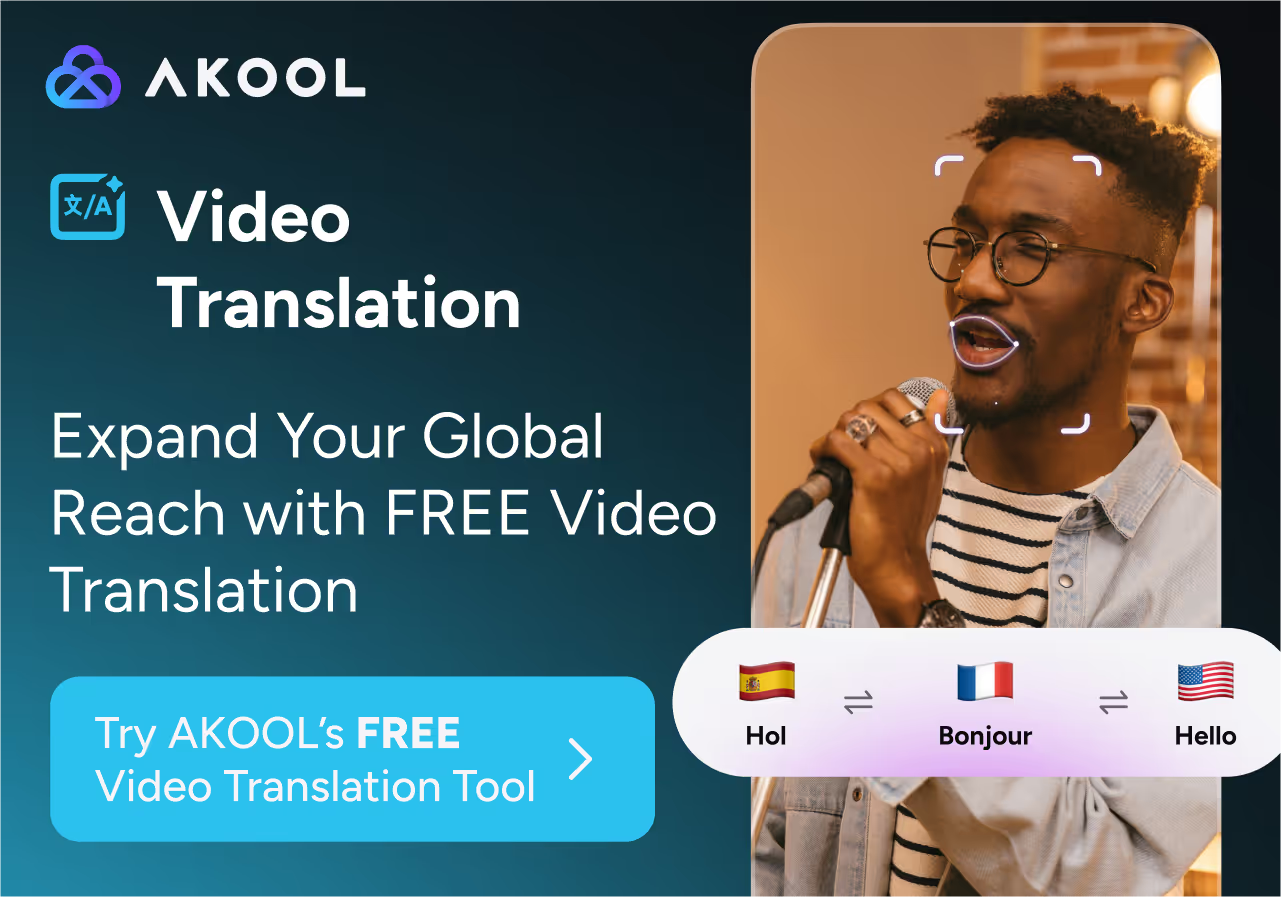
Training videos are the ultimate solution for imparting knowledge in an accessible and efficient manner. They're an excellent tool to onboard new employees and keep them updated with the latest changes and procedures.
With businesses and teams becoming increasingly global and dispersed, video has emerged as the most consistent and accessible platform for delivering training across different geographical locations. Moreover, this medium is incredibly effective in catering to diverse learning styles and preferences, which can vary widely across cultures and individual backgrounds.
Why Companies Need to Start Using AI Training Videos
Traditional training videos can become costly, especially for companies with a presence in a number of countries. With training programs costing tens of thousands of dollars to create and months to complete—it creates a bottleneck for many companies.
This is where AI training videos can help. Here’s how AI and translation capabilities specifically tailor these videos to enhance global workforce development:
Scalability and Customization
AI-powered training videos are the ultimate solution for organizations looking to efficiently scale up their training programs. With AI, companies can extend their training to a global audience without incurring additional costs, making it the most cost-effective way to train employees.
The videos can be quickly replicated and customized for different segments of the workforce, ensuring that each training session is tailored to meet specific regional or industry requirements.
The customization feature is particularly beneficial in B2B environments, where training specifications can vary depending on the project or client.
Consistency and Update Efficiency
Utilizing AI in training videos ensures a high level of consistency across all training modules, crucial for multinational companies aiming to maintain standard operational procedures across borders. Moreover, AI simplifies the process of updating training content.
As regulations change or new technologies emerge, AI tools can swiftly modify existing videos, thereby keeping all training materials up-to-date without substantial overheads or delays. This feature is indispensable for industries where compliance and regulatory standards frequently evolve.
Enhanced Engagement and Retention
Incorporating interactive learning elements such as quizzes, simulations, and "interactive" scenarios within AI-enhanced videos significantly boosts engagement levels among trainees. These interactive features not only make learning more engaging but also improve retention rates by actively involving employees in the training process. This is especially critical in complex B2B environments where understanding nuanced information is key to effective performance.
Overcoming Language Barriers with Translation Tools
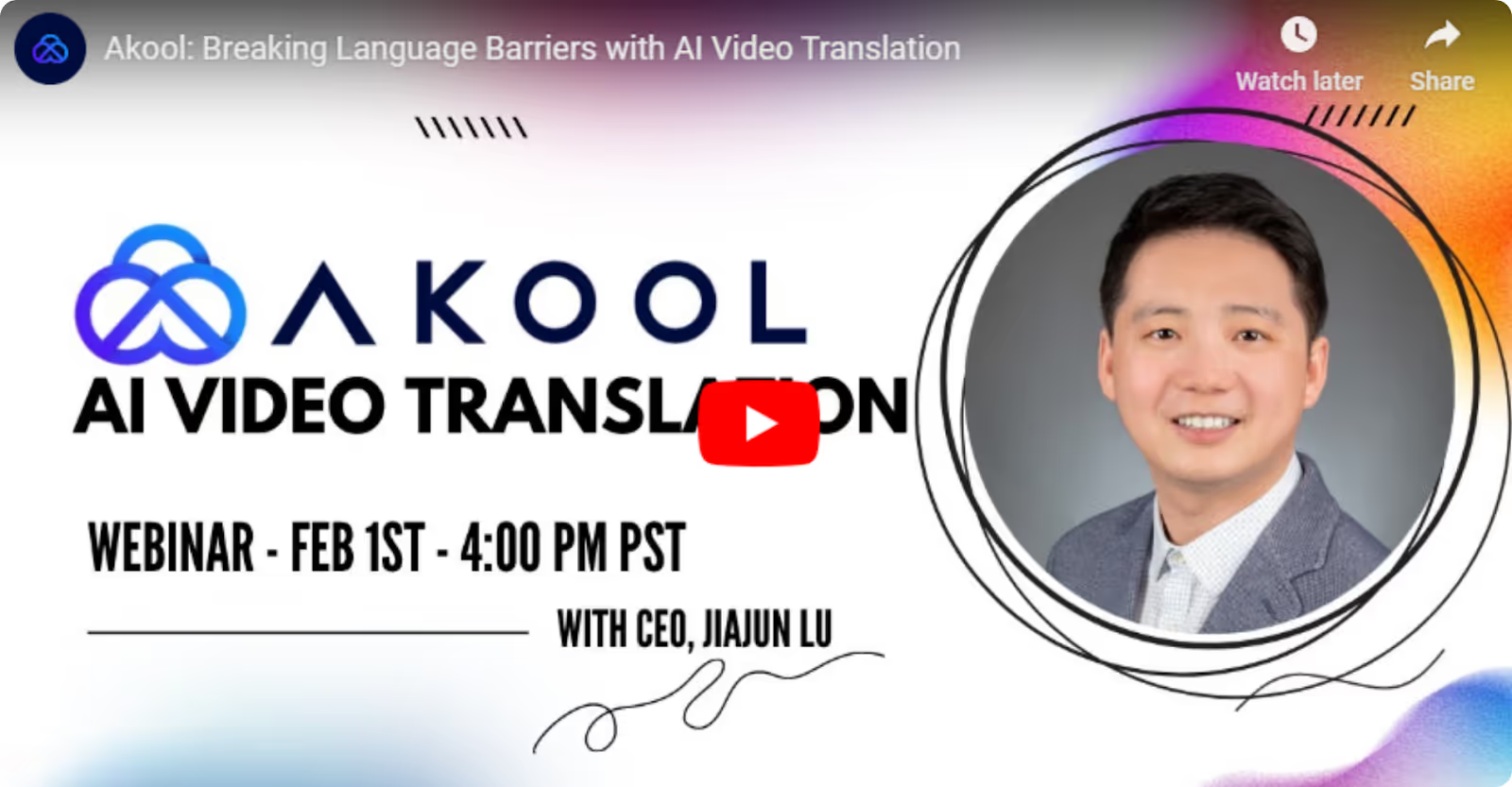
Translation tools integrated within AI training videos are transformative for global operations, making it possible to deliver training in multiple languages from a single source video.
This not only eliminates language barriers but also ensures that all employees, regardless of their linguistic background, have equal access to training resources.
The ability to understand and follow along in one's native language increases comprehension and effectiveness of the training, fostering a more inclusive workplace culture.
Developing a skilled workforce on a global scale requires not only the standardization of training practices but also an adaptation to diverse cultural and linguistic backgrounds.
Traditional training methods can fall short due to language barriers that prevent a significant portion of employees from fully understanding and engaging with the content. This lack of comprehension can lead to inconsistent practices, errors, and a decrease in overall efficiency, impacting competitive advantage in the global market.
Streamlining Training Processes with AI Technology
So how can companies efficiently train a diverse workforce quickly while remaining cost-efficient?
With AI tools like AKOOL's Video Translate. Here's how AKOOL can streamline training processes.
Enhancing Efficiency Through Automated Video Creation
AI-driven automated video creation allows for quick production of training materials that are both high-quality and consistent. AI tools help with the following.
- Rapid Adaptation and Localization: Videos can be quickly translated into various languages, making them accessible to a global workforce. This reduces the need for multiple training sessions across different regions, ensuring all employees receive the same quality of instruction.
- Voice Cloning: AKOOL's tool can clone voices, allowing a single set of video content to be personalized with familiar vocal tones in different languages, enhancing the learning experience by maintaining a consistent and relatable auditory presence.
- Content Optimization: AI can also optimize video content for different audiences by adjusting the complexity of the information based on the viewers' proficiency levels, ensuring that all participants receive training that matches their skills and understanding.
Customizing Training Videos with AKOOL's Video Translate Tool
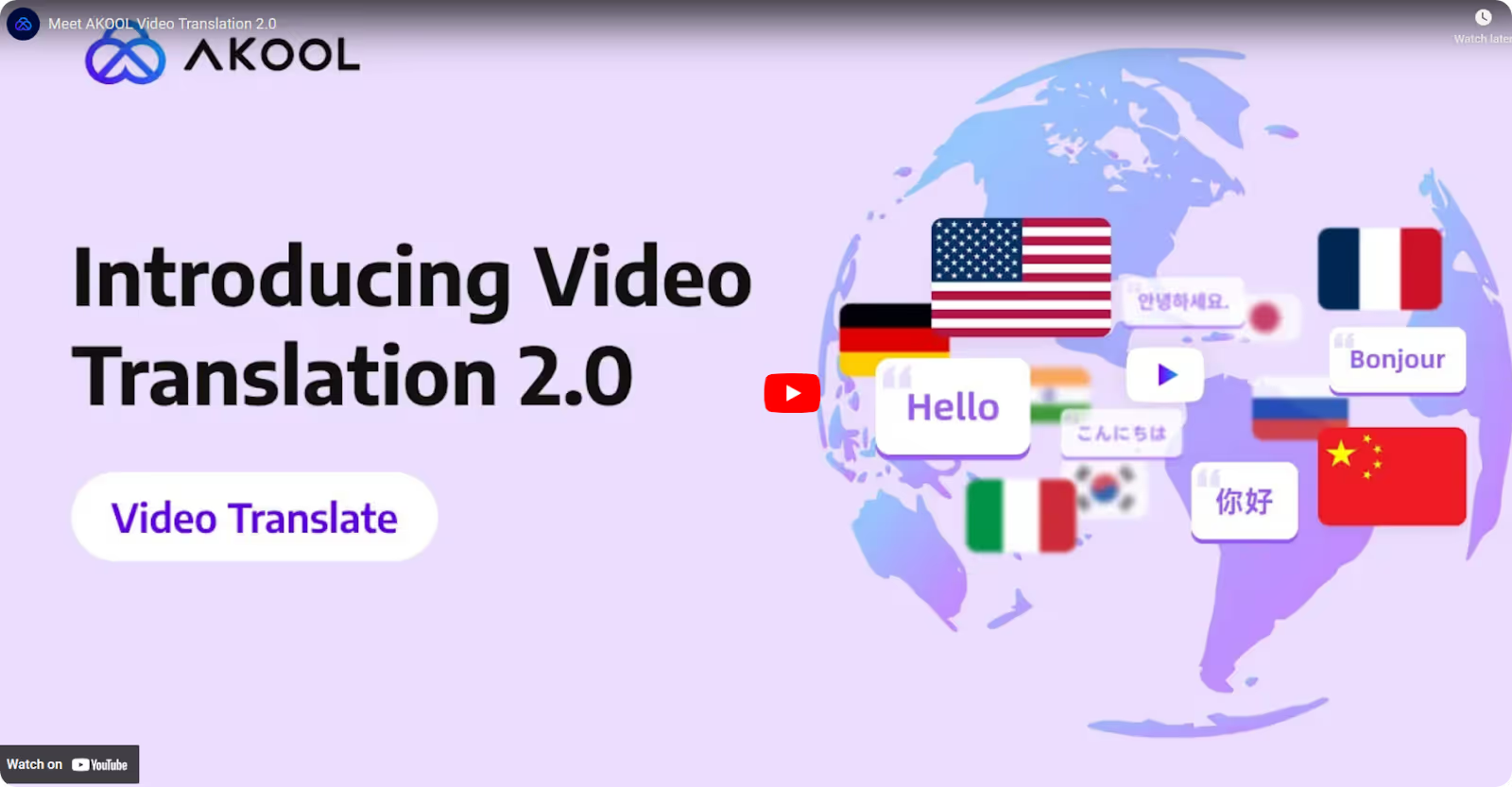
The ability to customize training content with advanced AI tools like AKOOL's Video Translate offers several key advantages:
- Scalable Training Solutions: By leveraging AI for video translation and customization, companies can create scalable training solutions that can be deployed worldwide at a fraction of the cost and time associated with traditional methods.
- Enhanced Learner Engagement: Translated and localized content is more relatable and easier to understand, which enhances learner engagement and improves the effectiveness of the training programs.
- Consistency in Training Delivery: AI ensures that the core messages and values of the company are preserved across all translations, maintaining a high standard of training quality and consistency across the global workforce.
How to Instantly Translate Training Videos for Global Workforce Development Using AKOOL
AKOOL's Video Translate tool streamlines the process of localizing videos for multiple countries by automating video creation and offering powerful translation capabilities.
Once you have your training videos recorded in your native language—it's simple to translate them into a number of different languages.
AKOOL's AI video translator platform supports 29 languages and clones the presenter's voice. Not only that, but it delivers near instantaneous results.
If you're looking to translate a video with lip-synced audio, all you have to do is follow these three steps.
Step 1: Upload Your Video
When it comes to global workforce development, it helps to create short, bite-sized videos to streamline the process. That being said, even if you have a long training session—it helps to splice up the videos and only include the most important information.
On the AKOOL Video Translator platform, it supports MP4, AVI and MOV video formats up to 300MB in size and 60 seconds in length.
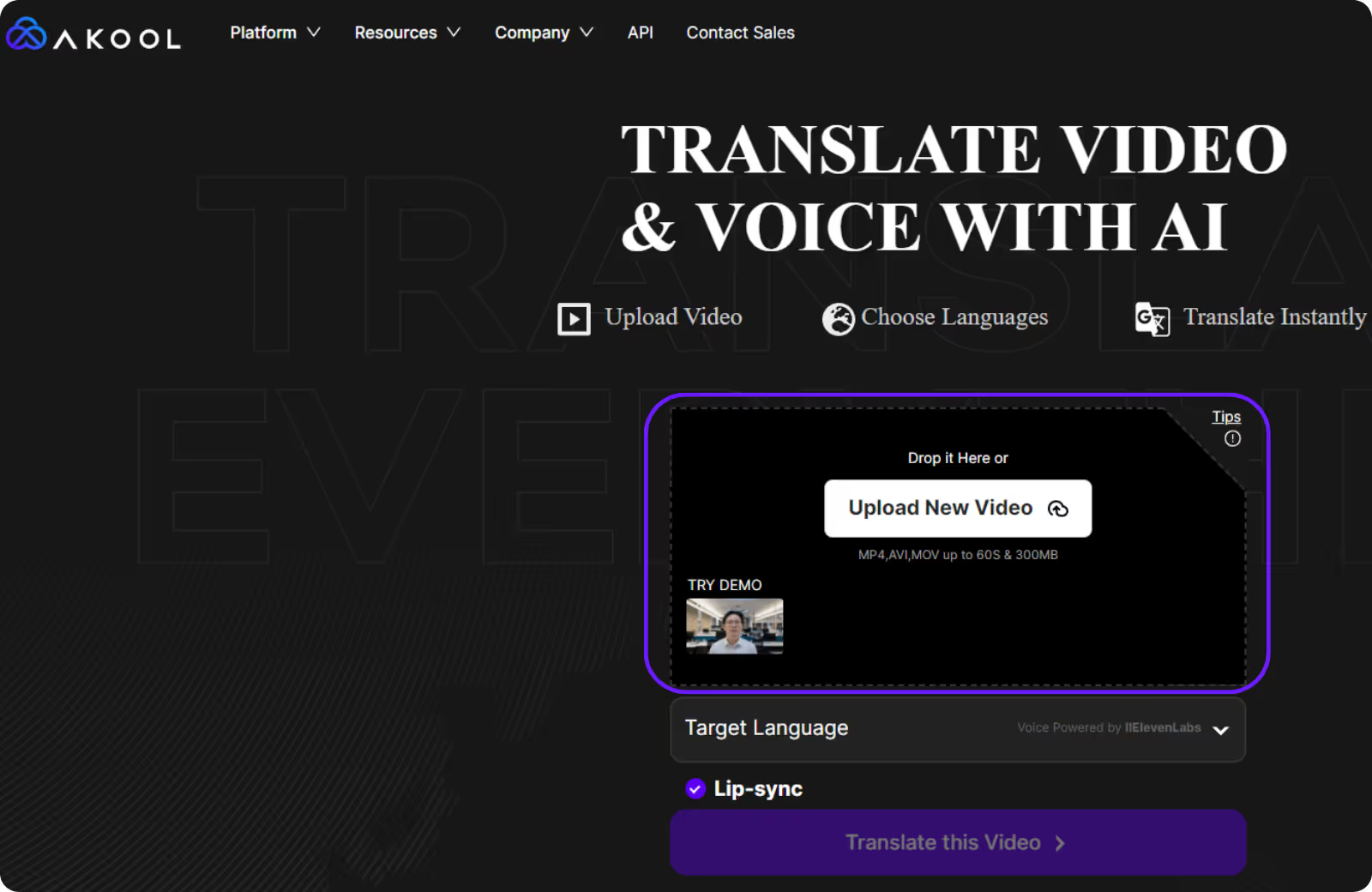
Step 2: Select Your Target Language
Once you've uploaded your video, select the language you want to translate your video to.
Step 3: Make Sure Lip-Sync is Checked and "Click Translate This Video"
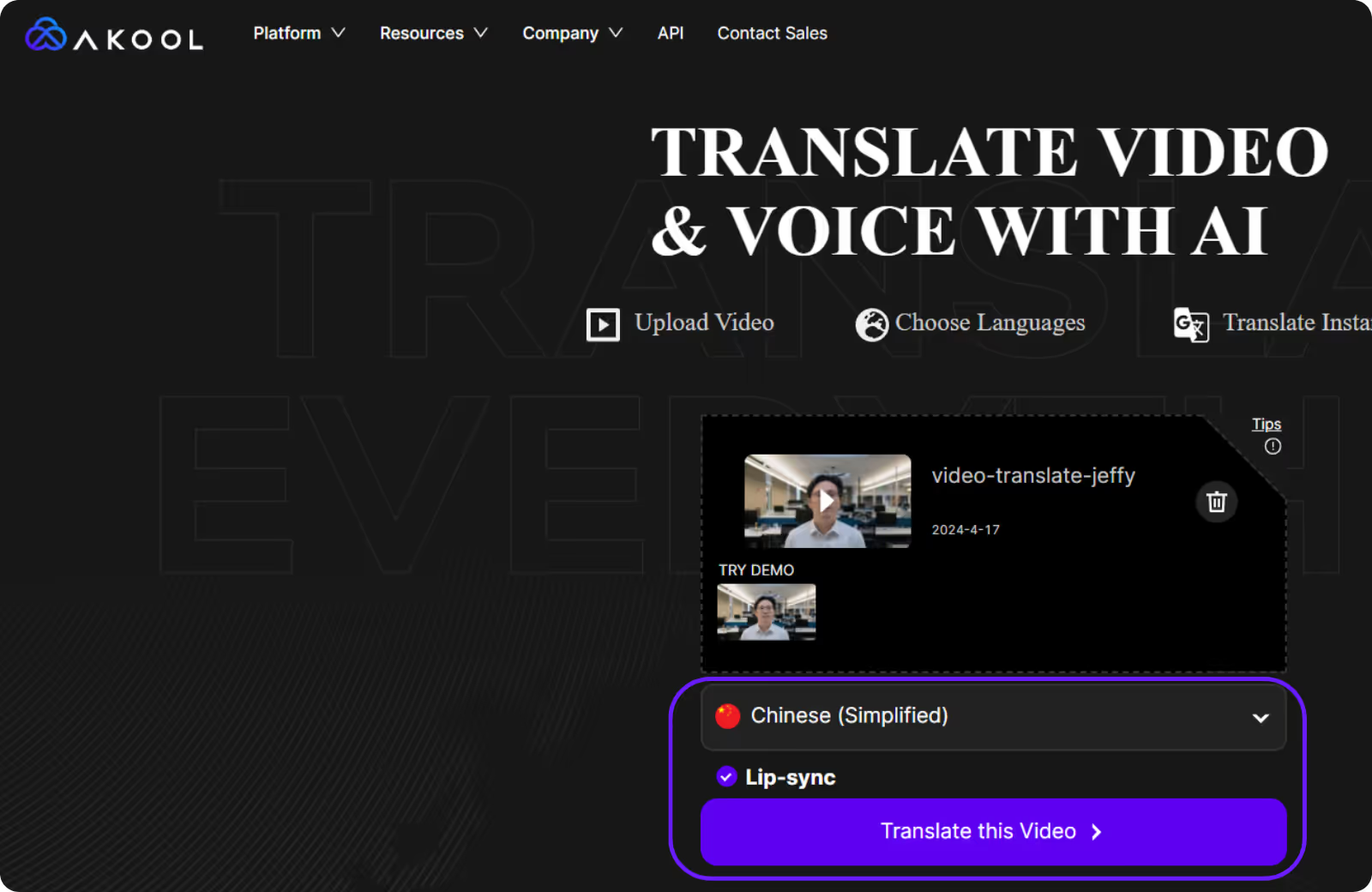
It's important that the mouth movements match the audio because this helps keep the workforce more engaged during training sessions.
Make sure "Lip-Sync" is toggled on, and then click the button to translate the video.
In just a few short minutes, you'll have your translated AI training video ready to deploy on your learning management system (LMS) or social media pages!
Best Practices for Creating Effective AI Training Videos
Of course, when it comes to training videos—it's important to keep your employees engaged.
The way to do that is by first planning and choosing the right type of AI training video for effective learning.
Understanding the Different Types of Training Videos
Choosing the right format for your training videos can significantly influence their effectiveness. For B2B companies, the following types of videos are particularly beneficial:
- Presenter-Style Training Videos: Ideal for emulating a classroom setting, these videos feature a digital presenter who can explain complex B2B products, services, or concepts in a clear and engaging manner.
- Animated Explainer Videos: Useful for breaking down intricate processes or abstract concepts common in B2B industries. Animation can help illustrate workflows or data in a visually engaging way that is easier to digest.
- Screen Recording Videos: Essential for software and IT companies, screen recordings can guide users through software interfaces and demonstrate new updates or features.
- Interactive Videos: Incorporating elements like quizzes or decision-making scenarios can enhance learning engagement and retention, especially important in training for sales strategies or compliance protocols.
- Microlearning Videos: Short, focused videos that are perfect for busy professionals who need to learn in quick, manageable segments, often on-the-go.
Regardless of which type of training video you decide to choose, you're able to translate them quickly and easily with AKOOL.
11 Tips for Developing Engaging and Informative Training Content
Creating engaging and informative training content is essential for effective learning and retention.
Here are practical tips to enhance the quality of your training videos:
- Start with Clear Objectives: Define what each training session aims to achieve. Establish clear, measurable training objectives that align with your business goals. This clarity helps in designing content that directly addresses the needs of your audience.
- Understand Your Audience: Know the skills, knowledge level, and learning preferences of your audience. This understanding allows you to tailor the content style, pace, and complexity, making it more relevant and engaging.
- Incorporate Storytelling: Use real-life scenarios and anecdotes to make the training relatable. Storytelling can help illustrate complex ideas in a simple and memorable way, which is particularly effective in maintaining learner engagement.
- Use Mixed Media Formats: Combine text, images, videos, and other elements to cater to different learning styles. Visual aids like infographics and charts can help summarize key points, while interactive simulations can provide hands-on experience.
- Keep It Concise and Focused: Attention spans are limited, so keep your content focused and avoid overwhelming learners with too much information at once. Break down information into digestible chunks and organize them logically.
- Choose Robust Translation Software: Select translation tools that support a wide range of languages and dialects, ensuring broad accessibility. Tools like AKOOL’s Video Translate can provide accurate translations and localizations tailored to different audiences.
- Maintain High Translation Quality: Ensure the translation maintains the original message’s integrity. Use professional services or advanced AI-driven tools that understand contextual nuances and industry-specific terminology.
- Test for Cultural Relevance: Validate the content with native speakers to ensure it is culturally appropriate and sensitive. This step is crucial in avoiding potential misunderstandings and improving the training's effectiveness.
- Use Subtitles and Dubbing: Provide subtitles for learners who prefer reading along with audio or have hearing impairments. Dubbing can also be used for markets that prefer audio in their native language, enhancing the learning experience.
- Incorporate Local Examples: When translating content, include local examples and case studies to make the material more relatable and impactful for learners from different regions.
- Regularly Update Translations: Just as with the original content, ensure that translations are regularly updated to reflect any changes or new insights. This practice helps maintain the accuracy and relevance of the training across all languages.
The Future of Training: Trends and Innovations
As we look towards the future, the role of AI and translation technologies in training and development is poised to expand further, making learning more personalized, engaging, and accessible across global teams. Here are some trends and innovations we'll likely see in the near future.
Global Accessibility through Cloud-Based Platforms: Cloud technology will continue to play a pivotal role in the future of corporate training, enabling easy access to training resources from anywhere in the world. This ensures that all employees, regardless of their geographic location, receive consistent, up-to-date training, fostering a cohesive and well-informed global workforce.
Scalable Learning Solutions: AI and cloud technologies will facilitate the development of scalable learning solutions that can be quickly adapted to different scales of operation—from small teams to large multinational corporations—without significant incremental costs, ensuring efficient and cost-effective workforce development.
Focus on Soft Skills Development: As automation and AI continue to handle more routine tasks, there will be a greater emphasis on training for essential soft skills such as leadership, communication, emotional intelligence, and critical thinking. AI-driven role-play scenarios and interactive modules will become increasingly prevalent to enhance these crucial skills, preparing employees for the evolving demands of the modern workplace.
Continuous Learning and Microlearning: With the rapid pace of change in technology and business practices, continuous learning will become the norm. Training programs will shift towards shorter, more focused content delivery models, such as microlearning, to accommodate busy schedules and improve knowledge retention, fostering a culture of lifelong learning and adaptability.
Use of Data-Driven Insights to Customize Learning: AI tools will leverage advanced data analytics to analyze learning patterns, offering highly customized content recommendations, personalized pacing, and tailored learning paths that align with individual learner profiles and professional development goals, optimizing the overall learning experience and outcomes.
Embrace the Power of AI Training Videos and Translation Tools
Training videos are a highly important part of imparting knowledge to team members in an organization. The use of AI technology in translating training videos not only simplifies the production process but also enhances global workforce development.
AI-generated training videos can be personalized and culturally aware, making them suitable for scaling globally with ease. This means that regardless of location or language, every team member can receive training tailored to their individual learning needs and preferences.
To discover the advantages of AI in training, try AKOOL's Video Translate tool for yourself. It provides a robust solution for creating multilingual training content that resonates with a global audience. By integrating AKOOL into workflows, companies can produce high-quality, engaging training videos that significantly improve learning outcomes and operational efficiency.




